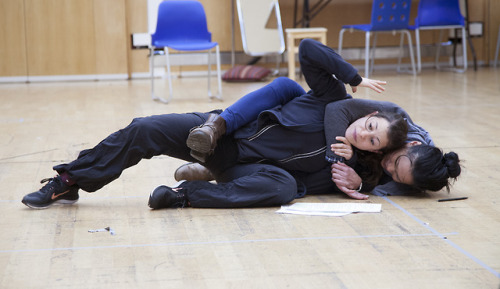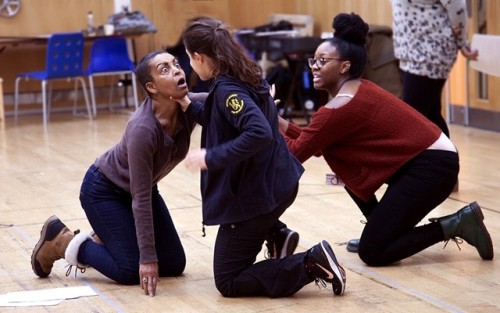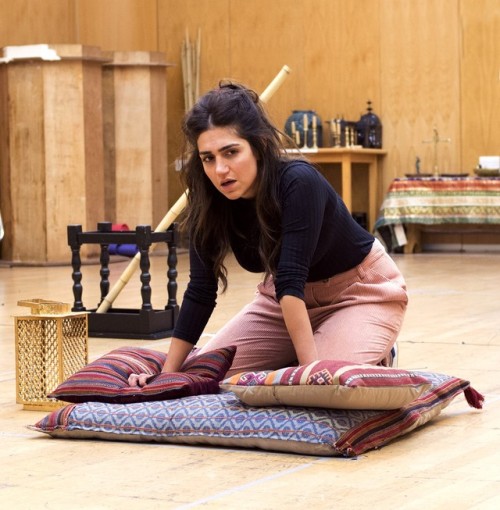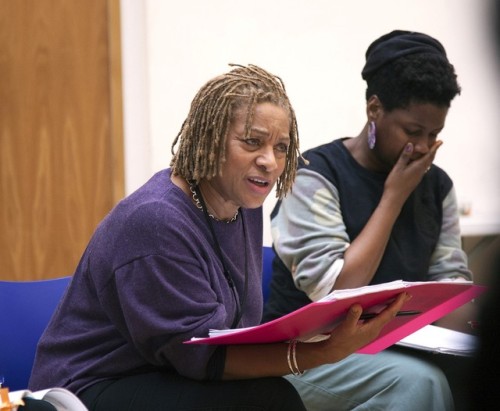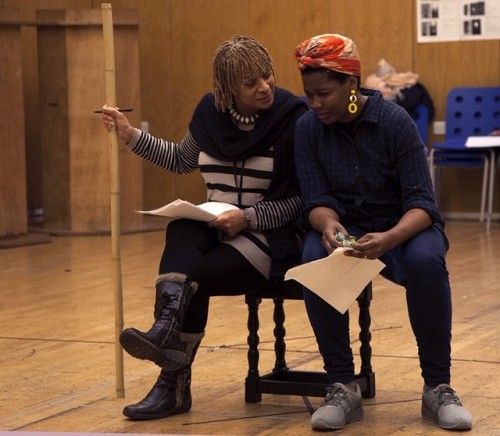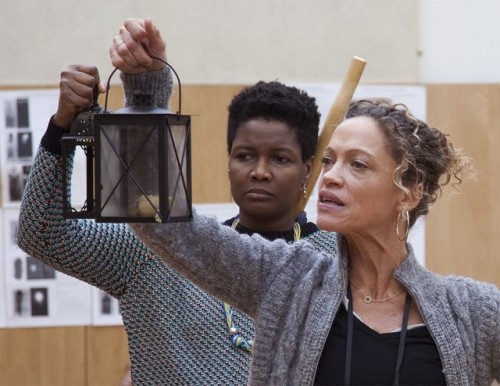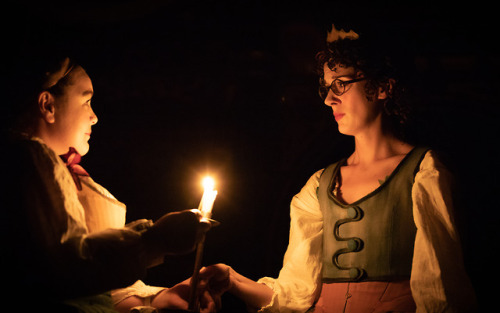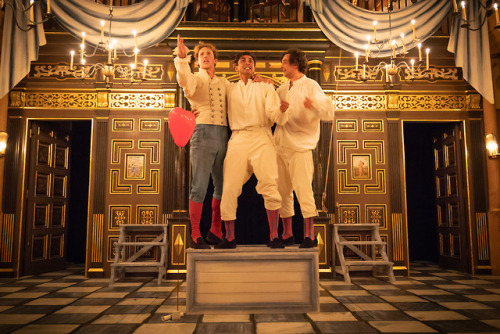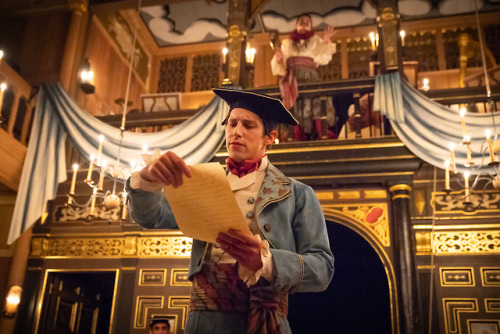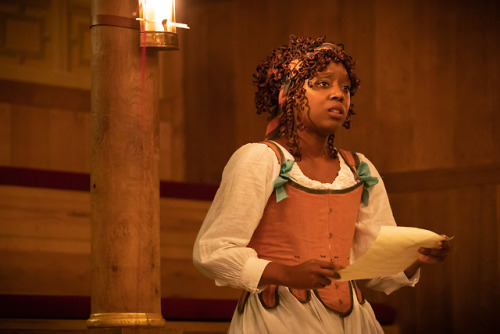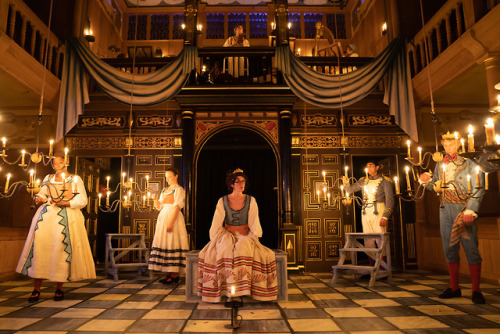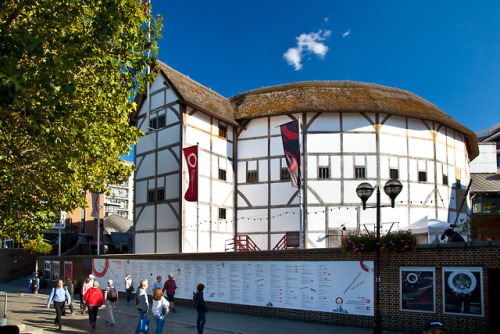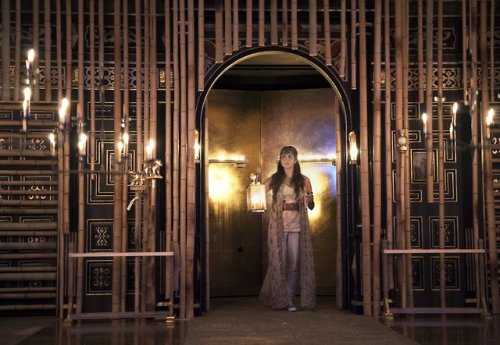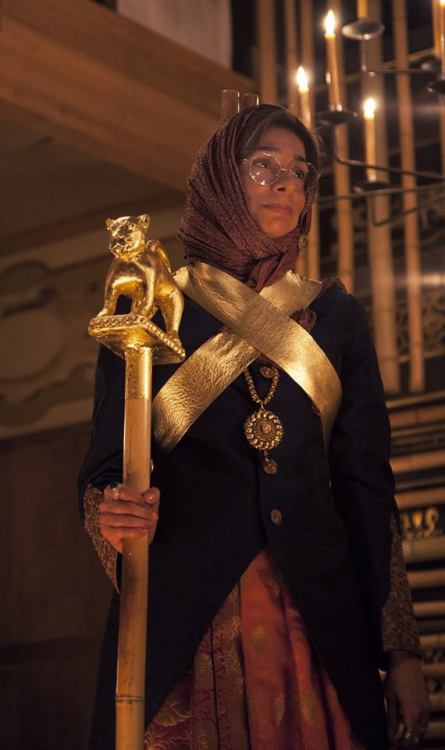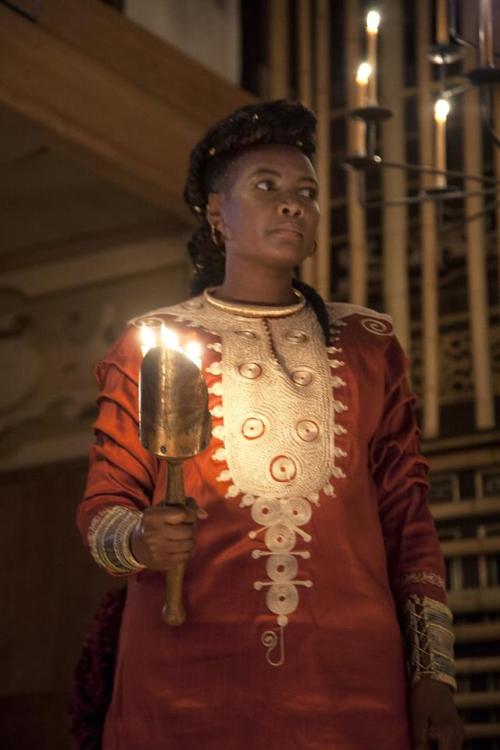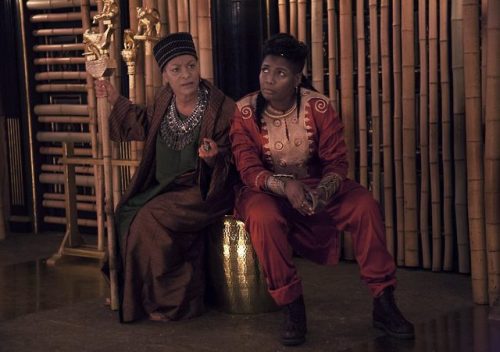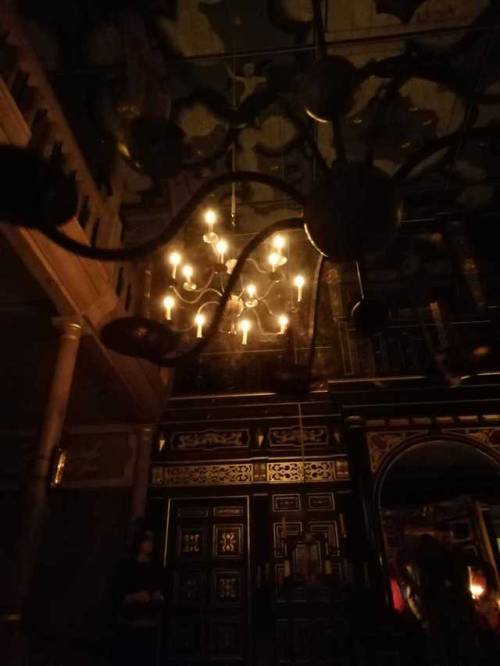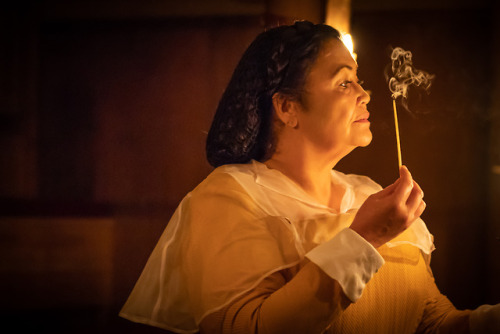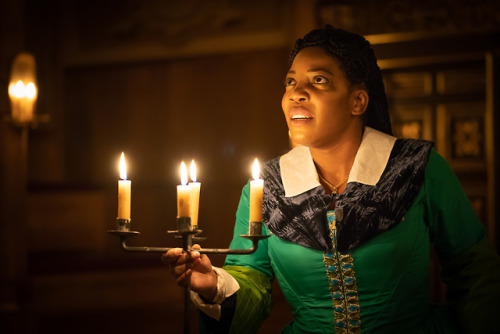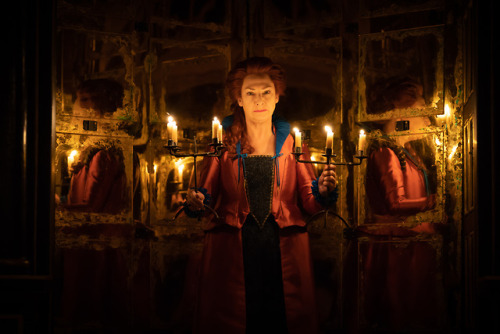#sam wanamaker playhouse
Richard II in rehearsal.
Beset by problems at home and abroad, a capricious king is forced to relinquish his ‘hollow crown’. As his supporters abandon him and his power trickles away, Richard reflects with startling eloquence on the disintegration of his status and identity.
Adjoa Andoh and Lynette Linton direct the first ever company of women of colour in a Shakespeare play on a major UK stage, in a post-Empire reflection on what it means to be British in the light of the Windrush anniversary and as we leave the European Union.
Richard II opens in the Sam Wanamaker Playhouse on 22 February.
Photography by Ingrid Pollard
Post link
Love’s Labour’s Lost in production.
Director Nick Bagnall brings Shakespeare’s rarely performed play to life in a world of wonder. Join the King of Navarre, the Princess of France and all their friends as they navigate this fairy tale in our jewel box theatre.
Love’s Labour’s Lost is in the Sam Wanamaker Playhouse until 15 September 2018.
Photography by Marc Brenner.
Post link
Shakespeare’s Globe produces new plays?
Jessica Lusk is our Literary Manager. She is responsible for the research and development of all our new writing. Lucky her! If you came to see Emilia in 2018 you can thank Jessica in part for that.
In this blog she explains why and how we commission new plays at Shakespeare’s Globe. If you’re a budding playwright this is essential reading.
The Globe has always been a new writing venue. It’s hard to believe now but Shakespeare was a new writer once, and The Globe I write from now, (the third Globe) is still a new writing venue today.
Our first brand new play was seen by enthusiastic audiences back in 2002, it was called The Golden Ass by Peter Oswald – an adaptation of a Roman Classic – with a cast of 30 actors playing almost 200 different characters, with puppetry, opera and mini-scooters… it was certainly not a case of starting small!
Since then we have produced almost 40 new plays, for both the Globe and the Sam Wanamaker Playhouse, including Jessica Swale’s Nell Gwynn, Howard Brenton’s Anne Boleyn, Che Walker’s The Frontline, Claire van Kampen’s Farinelli and the King, Morgan Lloyd Malcolm’s Emiliaand most recently Tom Stuart’s After Edward. They’ve played here, in the West End and on Broadway, as well as on tour around the UK.

Now, as we enter our 22nd year, the process of commissioning and developing new work is getting a shake-up. Shakespeare wrote his plays specifically for the Lord Chamberlain’s Men and for the playhouses they performed in, and once they had passed the censor then it was left to the audience to decide their worth.
We want to take this as our guide: to work with writers and produce exciting new plays written bespoke to the architecture they will be performed in. We will give writers the space and time to work with our academics and research team, spend time with our actors, see plays in our theatres, experiment with and learn from the architectural playing conditions of our two theatres, the practitioners who work in them, and ultimately write a play bespoke to those theatres.
We’re calling this idea ‘The Scriptorium’, hearkening back to the medieval idea of a space devoted to writing, but more on that another time…!
Our cause is to celebrate and interrogate Shakespeare’s transformative impact on the world - and where can that impact be more felt than in the writers of today…. Artistic descendants of this extraordinary shaman.
Our aim is to programme and produce new work within a season of Shakespeare’s plays that support and complement each other. For example, we programmed Emilia in a season of Shakespeare’s plays in which the character of Emilia threads her way through several stories – Othello,The Winter’s TaleandThe Two Noble Kinsmen. These plays provided an opportunity and framework to reflect on the myriad influences this ‘Dark Lady’ may have had on Shakespeare’s imagination, but crucially in Emilia, Morgan Lloyd Malcolm placed this revolutionary poet right where she is meant to be – at the centre of her own story.
At the beginning of 2019 we hosted our first ever new writing festival: responses to our winter production of Marlowe’s Doctor Faustus. The central Faustian bargain has traditionally been associated with the male ‘soul’, and so, we commissioned six female writers to give a feminine response to the central provocation at the heart of Doctor Faustus that asks 'what would you sell your soul for?’ The responses were surprising, revealing, funny and truly moving, and the reaction from the audiences were similar. To have an opportunity to see how classic plays sit in conversation with brand new ones is so exciting, and this festival of writing is something we want to do again and again, bigger and even better.
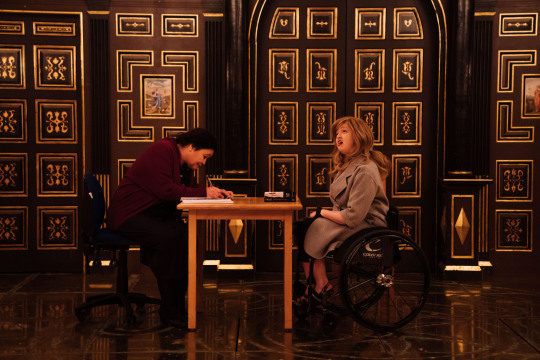
During the festival we experimented with different performance spaces and found that there’s so much more to play with than just a traditional stage. The Globe’s ‘Tiring House’ (where you would put on your ‘attire’ before a performance) makes a beautifully intimate and immediate playing space that created a ‘pop-up’ element to our first new writing festival. So, watch this space, and lots of other spaces around the building.
If you’re a writer, here are a few things to bear in mind:
One of the exciting things that writers find here is that the Globe theatre demands writing that is truly active, epic and democratic. The audience can be your biggest supporter or your harshest critic: roughly half of a Globe audience is standing, and they’ve only paid five pounds, so if they don’t like something, they can – and do – leave!
The Globe invites live and direct communication with its audience. It also responds brilliantly to declarations of huge shifts in space and time – think of Antony and Cleopatra where we move between Egypt and Rome again and again so swiftly, with nothing more than a different set of characters coming on to tell us that we have changed continent.
And as imagination bodies forth
The forms of things unknown, the poet’s pen
Turns them to shapes and gives to airy nothing
A local habitation and a name.- A Midsummer Night’s Dream
The space is the concept. The dramaturgy and structure of the play can be inspired by the necessity and parameters of the stage as much as the narrative that drives it forward. There are no sets, no amplified sound, no black outs – it’s a space that is completely shared with play, player and audience. And above us all is the sky. It’s a vertical as well as horizontal space. It’s mythic and domestic. It’s a tabula rasa that allows for an experiment in form as much as content, and that is a challenge our writers say they love to rise to.
Although Shakespeare himself has popped up in one or two of our new plays over the years, he’s not in himself the most interesting subject matter. Shakespeare wrote about Kings and Queens, faeries and myths, fools and twins, but what he really wrote about was the human condition. We want to find our new Shakespeares. Writers with big ideas that speak to a contemporary audience.
How to develop a play for Shakespeare’s Globe
We don’t accept unsolicited scripts, mainly because we’re not looking for finished, polished plays. Instead we want to support writers as you develop your plays bespoke to our playhouses.
If you’re a writer with an idea for the Globe please don’t spend your precious free time writing something without being paid for it!
Insteadsend us the pitch, invite us to your shows, or rehearsed readings, or send us scripts you’ve written in the past, but please do not send us your new plays written for the Globe. Our space is full of ‘airy nothing’ that invites you to speak to it and to fill it with your imagination; all we need is you, your poet’s pen and your big idea.
If you would like to invite us to see your work performed please email us on [email protected]. The subject line should read: Invitation/Pitch (New Writing).
Building photography by Clive Sherlock
Emilia and Dark Night of the Soul photography by Helen Murray
Post link
Music Instrument Design for Edward II.
Our wonderfully talented Director of Music, Bill Barclay has built some unique instruments for our production of Edward II. In this blog he tells us about these instruments and the three different worlds of sound he has created for the production.
Christopher Marlowe’s dark history of Edward II still reverberates loudly today both in its powerfully modern assertion that love is love, and in the incompatibility between vulnerability and the corridors of power. To help tell the story of these contrasts that ripple through time, I’ve built two new musical instruments that provide natural reverberation in the Sam Wanamaker Playhouse, which has a warm yet dry acoustic. These devices play alongside a raft of ethnic and period instruments to create three contrasting palates of sound.
The first world of sound: war, rebellion, dissidents, and political pressure
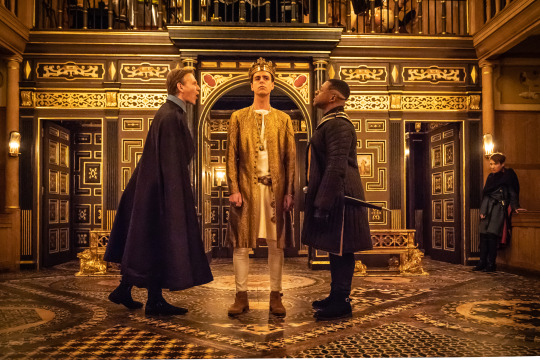
The first sound world describes the sounds of war, rebellion, dissidents, and political pressure. This is achieved through the creation of a steel cello, which is an instrument I first encountered in Boston built by musician Matt Samolis, also known by his stage name Uncle Shoe. I was infatuated with his creations and had used them in theatre before, but this is this instrument’s debut in the United Kingdom. With Matt’s guidance I’ve constructed a new kind of steel cello bespoke to the Sam Wanamaker.

This is how it works: several large deep ride cymbals and metal rods are bolted to a large stainless steel resonating sheet, which amplifies the metal objects as they are bowed and struck. The instrument is capable of a wide range of sounds which are almost entirely below the frequencies of consonants in speech, making words intelligible over a rash of haunting textures. Amazingly, the instrument often sounds synthesised – digital, even – metallic, industrial, dark, and yet shimmering. Matt and I used to play it for sound meditations in long beautiful drone concerts, and yet it can also distort to provide an incredible lexicon of theatrical punctuation. The whole band takes a turn on it, but it is chiefly played by Music Director Rob Millett, and it is played throughout the production.
The steel cello is complemented by a bass drum, field drum, and Sarah Homer’s contra alto clarinet – a rare instrument lower than the bass clarinet which gurgles at the low end of the hearing spectrum under the steel cello’s reverberant strokes.
The second world of sound: love

The second sound world was meant to contrast with the first as much as possible in order to depict the love between Edward and Gaveston as incompatible with its oppressive cultural antipathy to homosexuality. For this world we lean on Tunde Jegede’s kora – the West African harp, chiefly from the griot storytelling tradition of Mali.(A griot is a West African historian, storyteller, praise singer, poet, or musician).

The kora melds with a swarmandal, a Hindu harp the characteristic buzzing from its sympathetic strings. To fill out this pan-ethnic texture, we use a hammered dulcimer and a bass dulcimer, instruments that are from all over the world, though perhaps most prominent in music from the Middle East. These three harp-like instruments from around the world emphasise the beauty, the universalism, and perhaps the exotic presence that define love so unabashedly in this play. The textures these strings make with each other seems to chime perfectly with the candlelight, and lend an extraordinary atmosphere to the Playhouse.
The third world of sound: the church
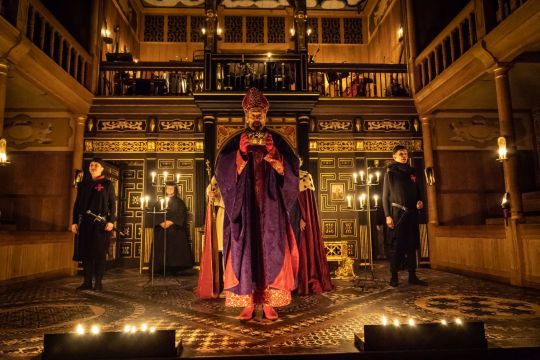
The third sound world is of the church. Here the tubular bells,accordion(mimicking an organ),cello, and contra alto clarinet form a league of ominously low, yet sinuously melodic instruments that collect like vines around the ankles of the play’s characters – powerful yet beautiful. Also in this world is the singers, who at various moments intone the Latin prayers of the Requiem Mass, as if the death of Edward I (Longshanks, Edward II’s father), still looms over the cracked glass of our protagonist’s troubled reign.
The second original instrument is the spring machine. Two long helical springs are attached to the theatre’s back wall, and connect directly to the heads of two frame drums bolted to the face of the music gallery. When the springs are rubbed and struck, we discovered that the sounds that pour out of the drums are unearthly, unsettling, and hard to mentally place. For weeks I had been seeking sounds for the play’s horrible final scenes that were truly original – sounds that could only mean this peculiar horror. We tried attaching a double bass to the springs, and had 4 springs start on each string, going into four drums. The sound was amazing but I could still hear the double bass, and the sound was too familiar.

When we took the bass away and hung the springs to a hook instead, it focused the sound much more on the strange sounds of the springs themselves, which we then tightened to amplify the signal. This revealed the coups de grace: when the drum heads are struck with a mallet in a heartbeat pattern, the heartbeat flows to the back wall and out the drums again, creating an analogue looping system. The intention is to recreate the sound of hearing your own heartbeat thudding in your ears, as you imagine the worst. The secondary intention is to allow the truly horrible parts of the story be truly horrible, by preparing our subconscious with unsettling sounds that have no preconceived identity. We don’t want you to be listening to the ‘music’ here – we want the sounds to unsettle the psychological anticipation of Edward’s grisly demise.
Once the act occur, there is no need, or room, for any more music in its final pages. The stage stays mostly in darkness, the characters have their comeuppance, and silence seems the only appropriate ending. We are still processing the horror, and the tragedy, and after two hours of steady building to this moment, it feels right to go out with these solo odd springs.
Other instruments used in the show include the tagleharpa, a medieval bowed three-string harp made for the Globe by a Russian instrument maker in Karelia. This undergirds the ancient character of Old Spencer and provides a bit of the dark ages as an important colour for the older generation of this world. Paul Johnson also plays several ethnic flutes:
- Kaval- a Bulgarian wooden flute
- Tambin - the national instrument of the West African Fula
- Bansuri- a common North Indian flute
- Bombard- a loud double-reed member of the shawm family used to play Breton music
- Portuguese and English bagpipes

Occasionally Paul plays the bagpipes against Sarah Homer’s soprano saxophone – an entirely modern instrument but ones whose timbre, when mixed with the pipes, creates the sensation of two fanfaring trumpets.
Finally, the Nyatiti, the lyre from Kenya, makes a few important solo appearances. This instrument means ‘daughter-in-law’, and it is the female counterpart to the maleness of the West African kora. The two harps provide contrasting emotional colours – the kora in act 1 when love is free, and the Nyatiti in the second half when it is not.
The ambitious nature of this score is testament to the dozens of shows played at the Globe by these four incredible musicians; indeed, the score has been composed for their unique multi-instrumentalism. There is no other person in London who could double on kora and cello than Tunde Jegede, nor any other player than Music Director Rob Millett who plays the dulcimer at an expert level, yet can learn how to work magic from something so new as a steel cello. Paul Johnson and Sarah Homer each in turn provide similarly original contributions that speak to their true uniqueness as players.
The overarching goal here was for the Globe to do what it does best – be inventive, embrace the parameters of acoustic music, and lean heavily on the unique experience of its core artists. I remain a student of period music at the Globe, but only in service of bringing period sounds together with improvisation, new instruments, living composers, and surprising orchestrations.
In collaborating in this way, we attempt to fabricate an entirely unique sound world that can only define the world of this play, here, right now.
Edward II is in the Sam Wanamaker Playhouse until 20 April.
Musical instrument photography by Hannah Yates
Edward II production photography by Marc Brenner
Post link
Richard II on the Sam Wanamaker Playhouse stage.
Adjoa Andoh and Lynette Linton direct the first ever company of women of colour in a Shakespeare play on a major UK stage, in a post-Empire reflection on what it means to be British in the light of the Windrush anniversary and as we leave the European Union.Designed by Rajha Shakiry. Co-directed by Adjoa Andoh and Lynette Linton.
Richard II is in the Sam Wanamaker Playhouse until 21 April.
Photography by Ingrid Pollard
Post link
Drag king cabaret by candlelight.
In this blog we meet the drag kings who will be performing in Moll and the Future Kings, a candlelit hour of work-in-progress, late-night drag king cabaret and improv.
This blog contains colourful language and swearing.
I prithee, pretty youth, let me be better acquainted with
Thee.
As You Like It

In response to Marlowe’s Edward II, which features an early modern portrayal of a homosexual relationship, we present Voices in the Dark: Pride, Then and Now, a festival that explores the themes of gender and sexuality in thrilling new ways.
Getting the party started on 30 March, the Sam Wanamaker Playhouse will host Moll and the Future Kings, a candlelit hour of work-in-progress, late-night drag king cabaret and improv.
The Globe stages have seen many women perform male characters, and vice versa. Shakespeare’s audience too would have been familiar with men performing female characters. More recently, in 2018 the Globe stage was graced with people of all genders, performing characters of any gender they chose in Alternative Miss World.
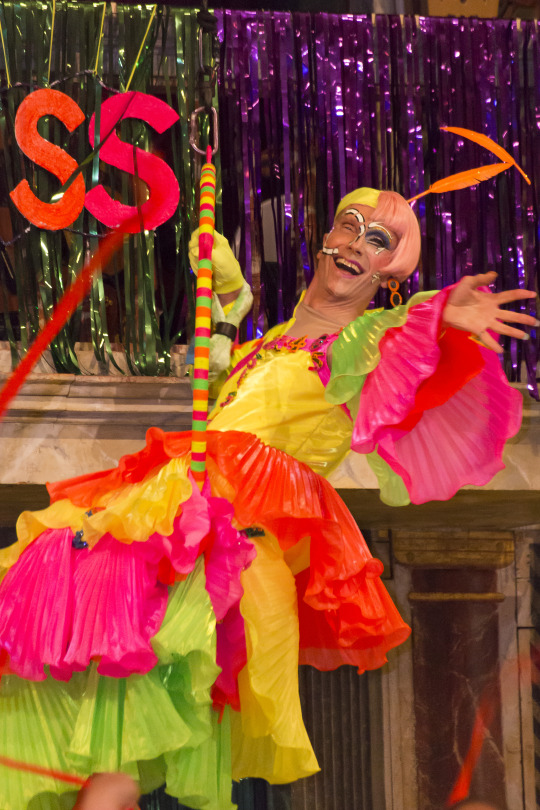
Moll Frith, also known as Mal Cutpurse, was a 17th-century cross-dressing performer, criminal and trickster. In 1611, during a production of The Roaring Girl, a piece written about her life by Middleton and Dekker, she appeared on stage in an improvised moment of rude jokes, songs and smoking.
Sarah Grange has been waiting 15 years to have a conversation with Moll Frith and Moll and the Future Kings is the start of it. For her, it is ‘an attempt to get back to meeting her [Moll Frith] on her own terms’. Moll’s spirit is being gloriously channelled through an amazing line-up of drag kings including Sigi Moonlight, Mal Content, Wesley Dykes and Bae Sharam.
Our relationship with clothing and gender in the street and on the stage may be evolving and becoming less defined, but in the 17th century, people had a very literal relationship with clothes.
‘I think when you look back at that early modern period, they had this completely different idea of gender…Their clothing [was] so gendered that they’re almost wearing their genitals on the outside. So if you put on the other gender’s clothing, it’s almost like having a sex change - they took it really seriously.’
Sarah Grange
All hail the kings
Without further ado, let’s meet the kings of the stage, as described in their own words.
Sigi Moonlight
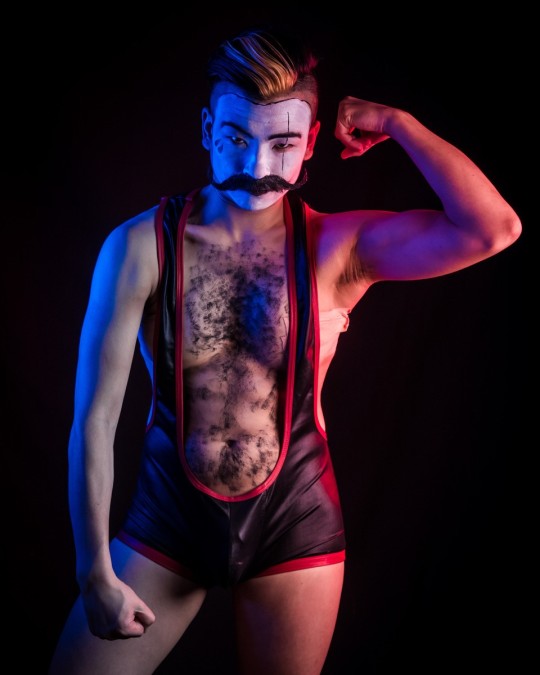
Sigi Moonlight : Dan Govan
In the year that a profoundly orange-faced, pussy-grabbing sociopath was elected leader of the free world, Sigi Moonlight came to Earth.
With his suave, satirical characters inspired by a dangerous mix of cinema and politics, Sigi presents humanity with a message of hope and defiance in (most likely) the last five years of its existence.
Mal Content
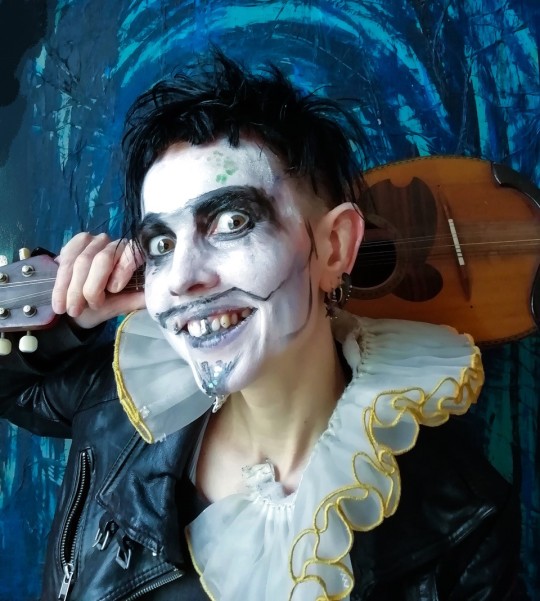
Mal Content Blioux Kirkby
Crawling from the inky-dark Jacobean depths, fuelled by bile, bombast and brandy laced with regret, Mal Content rises to wreak randomised revenge on a cruel and unfeeling world. You have been warned…
Wesley Dykes
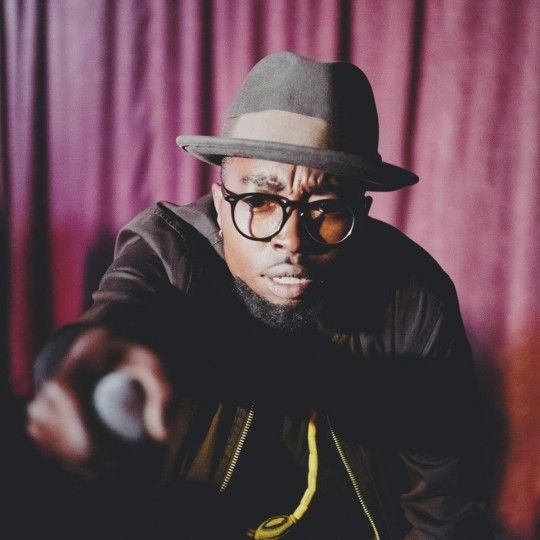
Wesley Dykes Lea L’Attentive
Wesley Dykes was born on Halloween 2012, after noticing a considerable lack of Colour, Soul and Funk in many of the Drag King scenes across the world. Usually Wesley is your favourite rapper, your favourite RnB singer and your friendly neighbourhood fxckboi. Tonight he’s your favourite storyteller, using spoken word, poetry and improv to weave multiple histories into this historical space.
Bae Sharam

Bae has been performing in the London Cabaret scene after graduating with a bang from the Michael Twaits’ Art of Drag course last year. Nominated for Best New Cabaret Act 2018 AND 2019 by Boyz Magazine and a MxGenderFvcker finalist, they are a queer muslim performance artist specialising in alt-drag.
Strap yourself in for rocky as fuck ride straight down to “Um, I don’t know if I can laugh at that?”. The answer is no, you can’t. But you probably will. And yes, that does make you a bad person.
You can listen to curator Sarah Grange and drag king Wesley Dykes chatting about Moll and the Future Kings on our podcast in Season 2, episode 2, Pride, Then and Now (transcript available).
Illustration by Ellan Parry
As You Like It photography by John Tramper
Post link
By Candlelight.
George Nichols is the Assistant Director for Edward IIandAfter Edward. He is writing a blog series about the processes and ideas in these two plays.
In this blog, George gives insight into how candles will be used to light Edward II which will be staged in the Sam Wanamaker Playhouse.
Obviously, the importance of lighting in theatre goes far beyond just allowing you to see the actors on the stage (although that is a vital function!). A casual theatregoer may not realise how significant lighting is, and how it fundamentally shapes the tone and feel of a production. In a conventional production, a good creative team work closely, so that action, space, sound and lighting are inextricable. Often, if a lighting design is doing its job you won’t notice it at all. Lighting at its best is a fluid accompaniment to movement, a best friend to design and a vehicle for expression.
So how does the unique candle lighting of the Sam Wanamaker playhouse affect the way we stage texts? Well, firstly it’s important not to think of candles as a restriction. Even though you have a very small range of paintbrushes, you have a huge and varied palette to paint from. Anyone who has seen Macbeth, which is running currently, will be able to attest to how ingeniously candlelight can be used.
In the playhouse there are six three-tiered chandeliers that can be lowered or raised, several sconces fixed to pillars which provide a small amount of light, hand-held candles and torches to be carried by actors as well as long footlights that sit at the front of the stage and reflect light upwards. All these light sources can be used in conjunction with each other, and each different combination has a different effect.
We’re always thinking about these different effects during Edward II rehearsals. The locations in the play all have different qualities of light, both literally and tonally, as we move from coronations to battlefields and abbeys to dungeons. Lighting candles takes time, so to flood the space with light or get rid of a lot of light you need to think of ways of incorporating candle lighting or snuffing into the action of the play. The lighting of candles can be a joy to watch, but it can quickly become panicked if a candle won’t light, so we have sessions in the space to make sure the cast all feel comfortable with lighting and holding candles. Open flames can be dangerous, so in these sessions, actors are reminded not to use petroleum based hair products, lest they go up in flames!
There are numerous challenges and quirks that come with candlelight. For example, a blackout can feel intense in a normal theatre, but in the playhouse, we also must keep in mind the fact that everyone is very close together, and that the smell of beeswax and sometimes incense can add another layer of intensity. This makes the use of darkness more of a statement. It’s pretty difficult to do in the middle of a half because you then have to work out a way to bring a lot of light back in to the space. However, we’re very fortunate that our director, Nick Bagnall, has a lot of experience of working in the playhouse. He’s able to quickly turn these challenges to our advantage, reinforcing the principle of seeing candlelight not as a restriction but as a unique opportunity.
Edward II opens in the Sam Wanamaker Playhouse on 7 February.
Post link
Doctor Faustus on stage in the Sam Wanamaker Playhouse.
Paulette Randall directs a lively production of Christopher Marlowe’s moral dilemma - what would you sell your soul for?
Doctor Faustus runs in the Sam Wanamaker Playhouse until 2 February 2019.
Photography by Marc Brenner
Post link



